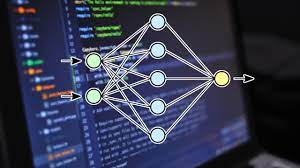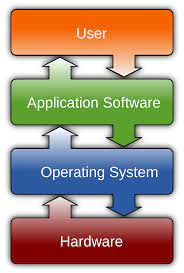Understanding AI Programming: A Comprehensive Guide
Artificial Intelligence (AI) programming is at the forefront of technological innovation, transforming industries and reshaping how we interact with the world. From virtual assistants to autonomous vehicles, AI programming plays a crucial role in developing intelligent systems capable of performing tasks that typically require human intelligence.
What is AI Programming?
AI programming involves creating software that can perform tasks such as learning, reasoning, problem-solving, perception, and language understanding. This is achieved by developing algorithms that allow machines to process data and make decisions based on that information. The goal is to create systems that can adapt and improve over time without human intervention.
Key Components of AI Programming
- Machine Learning: A subset of AI that focuses on developing algorithms that enable computers to learn from and make predictions based on data. It involves supervised, unsupervised, and reinforcement learning techniques.
- Neural Networks: Inspired by the human brain, neural networks are used to recognize patterns and classify data. They form the backbone of deep learning models.
- NLP (Natural Language Processing): This component allows machines to understand and respond to human language in a way that is both meaningful and useful.
- Computer Vision: Enables machines to interpret and make decisions based on visual data from the world around them.
Popular Languages for AI Programming
The choice of programming language can significantly impact the development process in AI projects. Here are some popular languages used in AI programming:
- Python: Known for its simplicity and readability, Python offers extensive libraries like TensorFlow, Keras, and PyTorch for machine learning applications.
- R: Preferred for statistical analysis and data visualization, R provides powerful tools for data manipulation in machine learning projects.
- C++: Offers performance efficiency which is crucial for resource-intensive applications like computer vision.
- LISP: One of the oldest languages used in AI development due to its excellent support for symbolic reasoning.
The Future of AI Programming
The field of AI programming continues to evolve rapidly with advancements in technology. As computational power increases and algorithms become more sophisticated, the potential applications for AI are virtually limitless. From healthcare diagnostics to personalized education solutions, AI programming will continue to drive innovation across various sectors.
The future promises even more integration of AI into daily life with improvements in areas such as ethical decision-making by machines, enhanced natural language processing capabilities, and more robust security measures against potential biases or misuse of technology.
Conclusion
AI programming is a dynamic field with immense possibilities. As developers continue to push boundaries with innovative solutions, understanding the fundamentals of AI programming becomes increasingly important. Whether you’re an aspiring developer or simply curious about technology’s future impact on society, staying informed about advancements in this area will be invaluable as we move towards an increasingly automated world.
Exploring AI Programming: Key Concepts, Languages, Integration with Machine Learning, and Industry Impact
- What is AI programming and how does it work?
- What are the key components of AI programming?
- Which programming languages are commonly used in AI development?
- How is machine learning integrated into AI programming?
- What are the future implications of AI programming on various industries?
What is AI programming and how does it work?
AI programming involves creating algorithms and software that enable machines to perform tasks typically requiring human intelligence, such as learning, reasoning, problem-solving, and understanding language. It works by leveraging data to train models that can recognize patterns and make decisions. This is achieved through techniques like machine learning, where systems are exposed to large datasets and learn to improve their performance over time. Neural networks, inspired by the human brain, play a central role in processing complex data inputs and generating outputs. As AI systems process more data, they become better at predicting outcomes or making decisions without explicit human intervention.
What are the key components of AI programming?
AI programming consists of several key components that work together to create intelligent systems capable of performing complex tasks. One of the primary components is machine learning, which involves developing algorithms that enable computers to learn from data and make predictions or decisions without being explicitly programmed. Neural networks, inspired by the structure of the human brain, are another crucial element, allowing systems to recognize patterns and process information in a way that mimics human cognition. Natural Language Processing (NLP) is essential for enabling machines to understand and respond to human language, facilitating communication between humans and AI systems. Additionally, computer vision allows AI to interpret and analyze visual data from the environment, making it possible for machines to “see” and understand the world around them. Together, these components form the foundation of AI programming, driving advancements across various applications and industries.
Which programming languages are commonly used in AI development?
In AI development, several programming languages are commonly used due to their unique strengths and capabilities. Python is the most popular choice because of its simplicity, readability, and a vast array of libraries such as TensorFlow, Keras, and PyTorch that facilitate machine learning and deep learning tasks. R is another language favored for its powerful statistical analysis and data visualization tools, making it ideal for data-driven AI projects. Java is often used in large-scale projects due to its portability and performance efficiency. C++ provides the speed necessary for resource-intensive applications like computer vision. Additionally, languages like LISP and Prolog are valued for their strong support in symbolic reasoning and logic-based AI applications. Each language offers distinct advantages, allowing developers to choose based on the specific needs of their AI projects.
How is machine learning integrated into AI programming?
Machine learning is integrated into AI programming by developing algorithms that enable systems to learn from data and improve their performance over time without explicit programming. This integration involves using various techniques, such as supervised learning, where models are trained on labeled datasets, and unsupervised learning, which allows the system to identify patterns in unlabeled data. Additionally, reinforcement learning is employed to train models through trial and error, optimizing their actions based on feedback from the environment. By leveraging these machine learning techniques, AI programs can analyze large volumes of data, make predictions, recognize patterns, and adapt to new information autonomously. This capability enhances the intelligence of AI systems, enabling them to perform complex tasks such as image recognition, natural language processing, and decision-making with greater accuracy and efficiency.
What are the future implications of AI programming on various industries?
The future implications of AI programming on various industries are profound and far-reaching, promising to revolutionize how businesses operate and deliver value. In healthcare, AI can enhance diagnostic accuracy and personalize treatment plans, leading to improved patient outcomes and efficiency in medical facilities. The automotive industry is experiencing a shift towards autonomous vehicles, which rely heavily on AI for navigation and safety features. In finance, AI algorithms are transforming risk assessment, fraud detection, and personalized banking services. Retail businesses are leveraging AI for inventory management and personalized customer experiences through advanced recommendation systems. Moreover, manufacturing is benefiting from AI-driven automation that enhances productivity and reduces operational costs. As AI continues to evolve, its integration across different sectors will likely lead to increased innovation, improved efficiencies, and new business models that were previously unimaginable.


